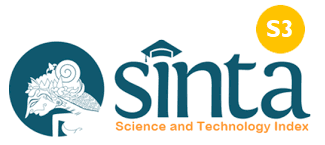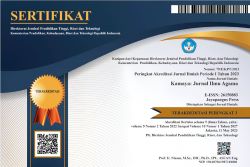Pura Eka Kahyangan Arena Kontestasi Identitas
Konflik Dan Rekonsiliasi Emik Umat Hindu Di Waode Angkalo, Sulawesi Tenggara
DOI:
https://doi.org/10.37329/kamaya.v8i4.4865Keywords:
Meaning Conflict, Eka Kahyangan, Emic, Community ResolutionAbstract
This study examines the internal conflict among Hindu transmigrants in Waode Angkalo Village, North Buton, regarding the interpretation of Pura Eka Kahyangan as a communal worship center. While some groups support the single-temple concept in line with PHDI policy, others advocate for the Tri Kahyangan system as an authentic representation of Balinese Hindu tradition. The research aims to analyze the dynamics of temple interpretation conflicts and explore emic-based resolutions emerging from community practices. A qualitative case study was employed, involving in-depth interviews, participant observation, and document analysis, with interactive data analysis through reduction, display, and conclusion drawing. Findings reveal that since 2007 the Hindu community has split into two factions supporters of Eka Kahyangan and Tri Kahyangan which by 2025 have grown to 32 and 97 households respectively. The conflict is driven by the persistence of Balinese traditions (sima), limited contextual understanding, functional dissatisfaction with the single temple, and political interests of local elites. Initially latent, the conflict evolved into a manifest struggle, turning the temple into a contested arena of identity, authority, and cultural legitimacy. Nevertheless, through the internalization of emic values such as ngayah, mutual cooperation, and deliberation, the temple continues to function as a multivocal symbol mediating tensions, sustaining social cohesion, and strengthening community resilience. This study highlights the significance of an emic approach in understanding intra-religious conflicts within transmigrant Hindu communities.
References
Amitasari, N., Prawitasari, M., & Akmal, H. (2021). Potret Kehidupan Masyarakat Transmigran Bali di Desa Sumber Makmur Kecamatan Satui Kabupaten Tanah Bumbu. Prabayaksa: Journal of History Education, 1(1), 1-7.
Arthawiguna, I. M. (2021). Dilema Identitas dan Krisis Reproduksi Kultural pada Komunitas Hindu Diaspora di Sulawesi Tengah. Jurnal Kajian Bali, 11(2), 345–364.
Atmaja, N. B. (2021). Konflik Internal Umat Hindu: Akar Permasalahan dan Dampaknya Terhadap Kohesi Sosial dan Budaya di Bali. Jurnal Kajian Bali, 11(1), 155–178.
Bastin, R. (2002). The Domain of Constant Excess: Plural Worship at the Munnesvaram Temples in Sri Lanka. Journal of the Royal Anthropological Institute, 8(2), 299–320.
Bernardo, G. A. D., Vezzali, L., Stathi, S., Keown, S. M., Cocco, V. M., Saguy, T., & Dixon, J. (2021). Fostering Social Change Among Advantaged and Disadvantaged Group Members: Integrating Intergroup Contact and Social Identity Perspectives on Collective Action. Group Processes & Intergroup Relations, 24(1), 26–47.
Bourdieu, P. (1991). Language and Symbolic Power. Cambridge: Polity.
Dahrendorf, R. (1958). Toward a Theory of Social Conflict. Journal of Conflict Resolution, 2(2), 170–183.
Dahrendorf, R. (1959). Class and Class Conflict in Industrial Society. Stanford, CA: Stanford University Press.
Dahrendorf, R. (2019). Class and Class Conflict in Industrial Society. In D. B. Grusky & S. Szelenyi (Eds.), Social Stratification, Class, Race, and Gender in Sociological Perspective (2nd ed., pp. 105–111). New York, NY: Routledge.
Dahrendorf, R. (2022). Essays in the Theory of Society. New York, NY: Routledge.
Darmayasa, I. B. (2023). Ruang Suci Sebagai Laboratorium Sosial: Ketahanan Budaya dan Reproduksi Nilai dalam Komunitas Multikultural. Jurnal Kajian Budaya, 15(1), 78–95.
Geertz, C. (1973). The Interpretation of Cultures: Selected Essays. New York, NY: Basic Books.
Geertz, C. (2005). Clifford Geertz by His Colleagues. Chicago, IL: University of Chicago Press.
Grunig, J. E. (2023). Public Relations, Social Inclusion, and Social Exclusion. Journalism & Communication Monographs, 25(2), 90–108.
Hardiana, S., & Asmarita, A. (2021). Perubahan Adat Perkawinan Masyarakat Transmigran Bali di Konawe Selatan. Etnoreflika: Jurnal Antropologi.
Horii, M. (2017). Contextualizing “Religion” of Young Karl Marx: A Preliminary Analysis. Critical Research on Religion, 5(2), 170–187.
Hubeis, A. V. S., et al. (1991). Konflik Sosial pada Masyarakat Transmigran. Bogor: Institut Pertanian Bogor.
Lansing, J. S. (2007). Perfect Order: Recognizing Complexity in Bali. Princeton, NJ: Princeton University Press.
Lederach, J. P. (1997). Building Peace: Sustainable Reconciliation in Divided Societies. Washington, DC: United States Institute of Peace Press.
Maćkowiak, A. (2021). Contesting Rituals: The Case of Pura Lingsar in Lombok. Indonesia and the Malay World, 49(143), 1–20.
Mahalakshmi, R. (2014). Book Review: Wendy Doniger, On Hinduism. Studies in History, 30(2), 223–228.
Picard, M. (2004). Bali: Cultural Tourism and Touristic Culture. Singapore: National University of Singapore Press.
Prorok, C. V. (1987). Hindu Temples in Trinidad: The Negotiation of Ethnic Identity in a Plural Society. Caribbean Quarterly, 33(2/3), 59–73.
Putra, I. D. G. A., & Darmayasa, I. B. (2022). Pura dalam Pusaran Konflik Simbolik: Memudarnya Ruang Konsensus dan Dampaknya Terhadap Ritual Komunal di Komunitas Hindu Urban. Jurnal Kajian Agama dan Masyarakat, 18(1), 45–62.
Reddy, S. (2023). Hindu Temples in America: Diaspora, Community, and Identity. Journal of Hindu Studies, 16(1), 45–62.
Reuter, T. A. (2002). Custodians of the Sacred Mountains: Culture and Society in the Highlands of Bali. Honolulu: University of Hawai‘i Press.
Suardana, I. N. (2022). Pura Sebagai Ruang Negosiasi: Konflik Internal Umat Hindu dan Mekanisme Resolusi Berbasis Kearifan Lokal. Jurnal Ilmu Sosial dan Humaniora, 11(1), 112–128.
Sugiartha, I. G. B. (2019). Pura Sebagai Arena Negosiasi Identitas dan Kuasa Simbolik dalam Masyarakat Bali. Jurnal Ilmu Sosial dan Humaniora, 8(2), 179–190.
Suyadnya, I. W. (2019). Interaksi Kekuasaan Adat dan Negara dalam Perspektif Masyarakat Bali Kuno Tenganan Pegringsingan. Etnosia: Jurnal Etnografi Indonesia, 4(1), 1–15.
Turner, V. (1967). The Forest of Symbols: Aspects of Ndembu Ritual. Ithaca, NY: Cornell University Press.
Turner, V., Abrahams, R., & Harris, A. (2017). The Ritual Process: Structure and Anti-Structure. New York, NY: Routledge.
Utama, I. W. B. (2011). Adaptasi Budaya Masyarakat Bali Aga dalam Merespon Regulasi Negara dalam Bidang Agama (Disertasi Doktor, Universitas Udayana). Denpasar: Universitas Udayana Repository.
Utari, N. P., Noak, I. K., & Pramana, I. M. (2024). Konflik Tanah Antara Desa Adat Klecung dan Puri Kerambitan di Tabanan. Triwikrama: Jurnal Ilmiah Kajian Budaya.
Warrier, M. (2009). Hindu Selves in a Modern World: Guru Faith in the Mata Amritanandamayi Mission. New York, NY: Routledge.
Wirawan, I. G. A. (2020). Konstruksi Otoritas dan Authenticity: Perebutan Makna Tri Kahyangan vs Pura Tunggal pada Komunitas Hindu Diaspora di Lampung. Jurnal Kajian Agama dan Budaya, 16(2), 112–129.
Downloads
Published
How to Cite
Issue
Section
License
Copyright (c) 2025 Kamaya: Jurnal Ilmu Agama

This work is licensed under a Creative Commons Attribution-ShareAlike 4.0 International License.
An author who publishes in the Kamaya : Jurnal Ilmu Agama agrees to the following terms:
- Author retains the copyright and grants the journal the right of first publication of the work simultaneously licensed under the Creative Commons Attribution-ShareAlike 4.0 License that allows others to share the work with an acknowledgement of the work's authorship and initial publication in this journal
- Author is able to enter into separate, additional contractual arrangements for the non-exclusive distribution of the journal's published version of the work (e.g., post it to an institutional repository or publish it in a book) with the acknowledgement of its initial publication in this journal.
- Author is permitted and encouraged to post his/her work online (e.g., in institutional repositories or on their website) prior to and during the submission process, as it can lead to productive exchanges, as well as earlier and greater citation of the published work (See The Effect of Open Access).
Read more about the Creative Commons Attribution-ShareAlike 4.0 Licence here: https://creativecommons.org/licenses/by-sa/4.0/.





